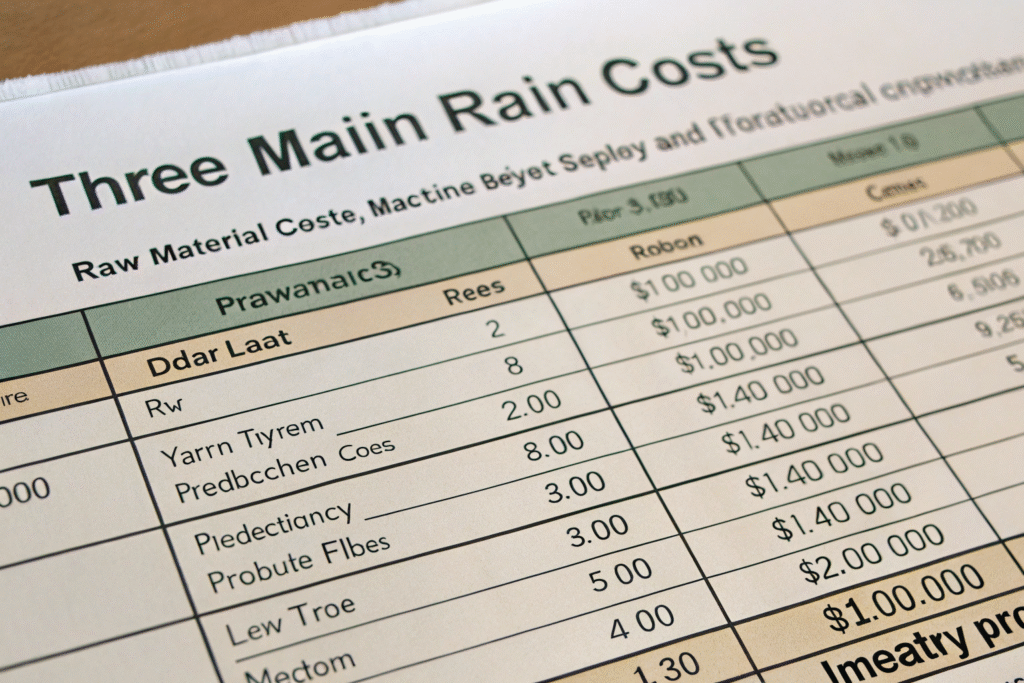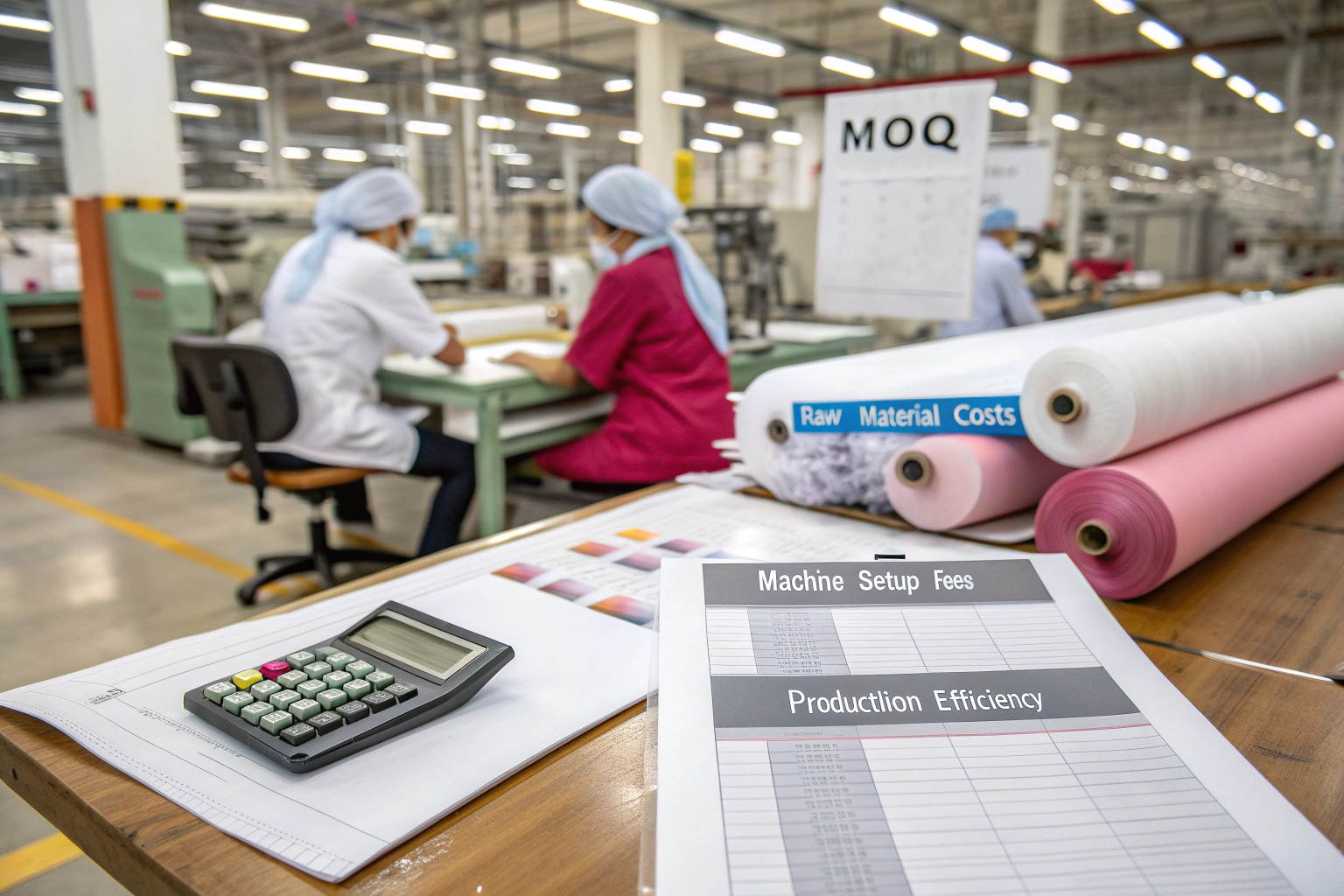As a fabric supplier with over two decades in China's textile industry, I've helped countless buyers navigate MOQ challenges. Many feel trapped between high minimums and inventory risks. The solution lies in understanding supplier economics and building strategic partnerships.
Fabric MOQ is the minimum quantity a supplier will produce at a set price. Calculate it by analyzing raw material costs, machine setup fees, and production efficiency. Optimization comes from strategic ordering, fabric consolidation, and leveraging supplier relationships.
Let me share practical strategies that have helped our partners save costs while maintaining quality and delivery speed.
What is fabric MOQ and how is it calculated?
MOQ exists because production has fixed costs. Setting up looms for custom jacquard or dyeing vats for specific colors requires significant resources. We need orders large enough to make these setups economically viable.
The calculation includes three main components: raw material costs (yarn, fibers), machine setup costs (fixed regardless of order size), and production efficiency (labor, machine time). Understanding this breakdown helps you negotiate better terms.

Why do MOQs vary between fabric types?
MOQs reflect production complexity. Standard cotton poplin has low MOQs because we produce it continuously. Custom performance fabrics with moisture-wicking or UV protection features require dedicated R&D and production lines, justifying higher minimums.
Specialized finishes like antibacterial treatments or custom digital prints also increase MOQs. The more unique the fabric, the higher the investment needed per meter.
How can you negotiate lower MOQs?
Successful MOQ negotiation focuses on mutual benefit. Consider these approaches: use standard base fabrics from our inventory for custom colors, commit to annual volume across multiple orders, or adjust specifications to fit existing production lines. Building long-term relationships makes us more flexible with reliable partners.
What strategies optimize fabric orders for cost and efficiency?
Order optimization transforms sourcing from a cost center to competitive advantage. For US clients concerned about tariffs and timelines, this is crucial. The goal is buying the right amount at the right time.
We recommend phased ordering—start with small test batches, then scale successful items quickly. Our 48-hour sample development and agile production support this approach. Also consider fabric consolidation: using versatile fabrics across multiple product lines increases per-fabric volume, qualifying for better pricing.

How does fabric consolidation reduce costs?
Using fewer fabric types in larger quantities dramatically improves pricing. Instead of five similar cotton twills, you might use two versatile options across your collection. This increases order volume for each fabric, lowering per-meter costs and ensuring MOQs are met comfortably.
Consolidation also simplifies quality control and inventory management. Our experts can recommend high-performing fabrics suitable for multiple applications, from fashion to functional wear.
What role does inventory management play?
Smart inventory management balances availability with storage costs. Our live inventory system provides real-time access to 30,000+ stock designs, allowing you to bypass MOQs for staple items. For custom fabrics, transparent production tracking helps you coordinate manufacturing schedules precisely.
We also offer staggered shipments—producing bulk quantities but shipping in phases. This improves cash flow while maintaining production efficiency.
How does supplier choice impact MOQ and order flexibility?
Your supplier determines your sourcing flexibility. Giant mills offer low prices but require massive MOQs. Small traders are flexible but lack quality control. We've positioned ourselves in the middle—large enough for scale, agile enough for partnership.
Our vertical integration (weaving, dyeing, printing, coating) provides unique flexibility. We can batch similar orders from different clients or adjust production schedules to accommodate smaller quantities without sacrificing quality.

What are benefits of vertical integration?
Controlling multiple production stages shortens lead times and ensures consistent quality. More importantly, it creates MOQ flexibility. We can combine similar orders or use standard bases for custom finishes, options unavailable through disjointed supply chains.
This integration also means better quality control throughout production, not just final inspection. Your fabric receives consistent attention from yarn to finished product.
Can suppliers help with logistics and tariffs?
Absolutely. We handle complete logistics including customs clearance, crucial for US clients facing tariff concerns. Our "Silk Road Keqiao" connections provide overseas warehousing options and optimized shipping routes.
By consolidating shipments with other clients, we secure better freight rates while maintaining security and tracking. This directly addresses pain points around timeliness and cost predictability.
What are common MOQ pitfalls and how to avoid them?
The biggest mistake is focusing only on unit price while ignoring total costs. Low per-meter prices with high MOQs can create dead stock if market response is weak. Another pitfall is misunderstanding terms—is MOQ per order or per color/style?
Always request detailed breakdowns and clarify terms upfront. We provide transparent pricing that includes quality control and basic documentation costs.

How to avoid overstocking from high MOQs?
Test markets before committing to large orders. Use our small-batch customization for pilot runs. Combine stock fabrics (no MOQ) for basics with custom fabrics for signature pieces. This hybrid approach balances innovation with risk management.
We also recommend seasonal planning—ordering core fabrics in bulk while using quick-response production for trend-driven items.
Why is quality control crucial with low MOQs?
Surprisingly low MOQs sometimes indicate quality compromises. Suppliers might use leftover materials or skip inspection steps. Our CNAS-certified testing lab ensures consistent quality regardless of order size.
Always verify supplier certifications and quality processes. Proper QC prevents costly returns and protects your brand reputation.
Conclusion
Mastering MOQ requires understanding supplier economics and building strategic partnerships. The right supplier combines scale with flexibility, offering optimization options without quality compromises.
If you're seeking a partner who can balance cost, quality, and flexibility for your fabric needs, let's connect. Contact our Business Director Elaine at elaine@fumaoclothing.com to discuss how we can optimize your sourcing strategy.










